

I’ve been thinking that I needed to update the guest bathroom because it feels pretty 1970’s but I’m not good at design stuff so nothing ever happens. But then I got a gift certificate for Walls Need Love, which specializes in removable wall decals and posters and I was like “Can you make me a full-sized bear sticker?” and they were all, “Yes. Yes we can.”
So now my bathroom is renovated. Victor says I’m using that word incorrectly but I don’t think so. Plus, I think it’s only fair that we’re always saying “Does a bear shit in the woods?” and now there’s a bear in our bathroom watching you do your business. It’s especially nice when we have visitors and they don’t realize they have company until they’ve closed the door and see an angry bear behind them in the bathroom mirror. A lot of yelping happens and some people have claimed it was so unexpected they practically shit themselves, which I think it just another affirmation that I totally picked the right room to install a bear.
PS. Also, he’s perfect for taking selfies with because even if you look kinda blah no one notices because THERE’S A FUCKING BEAR BEHIND YOU. So you look fierce and/or about to be mauled and no one says, “You should really start wearing make-up” because they’re too busy saying, “What is happening in your house? Do you need help?”
PPS. The bear has his paws down in front of his body and I thought I could get a cute picture of him playing leapfrog with me so I bent over with my hands on my knees like he was about to leap over my back. Then I saw the picture and realized it totally looked like the bear was violating me. No one wants that. Do not play leapfrog with bears. It doesn’t end well. This is my advice to you.
PPPS. This bear needs a name and at first I was thinking of “Bearnstein” Bearnstein in homage to those bear books I loved when I was a kid, kid but then I looked it up and turns out the bears were named “Berenstain” which seems weird because I always assumed those bears were Jewish and now I don’t even know anymore. Then I thought I’d call him “Beowulf” Beowulf because I once read that “Beowulf” is a kenning of “Bee” and “Wolf” and I always thought a Bee-Wolf bee-wolf would be the scariest animal ever. (But last week someone sent me a link to a half-spider/half venomous snake and I reassessed. Do not look at that link if you ever want to sleep again.)
PPPPS. A “kenning” is an Old Norse compound that uses figurative language in place of concrete single world nouns. Like, instead of using the word “sword” Old Norse poets would call it a “wound-hoe,” which is the best term ever. “Can you pass me that butter knife?” “You mean this wound-hoe?” We need to bring this shit back, y’all. From now on kneecaps are “leg-elbows” and colicky babies are “scream-satchels”. A NEW LANGUAGE IS BORN. THANK YOU, KEVIN BEOWULF.
PPPPPS. His first name is Kevin. The bear, I mean. I can’t relax enough to pee in front of a bear named Beowulf. That’s way too much pressure. “Kevin” is much more non-threatening.
PPPPPPS. How many addendum’s can I add make before this gets ridiculous? Six. Six is the answer.
PPPPPPPS. Victor disagrees and says this was already ridiculous before the first PS. Kevin and I respectfully disagree.
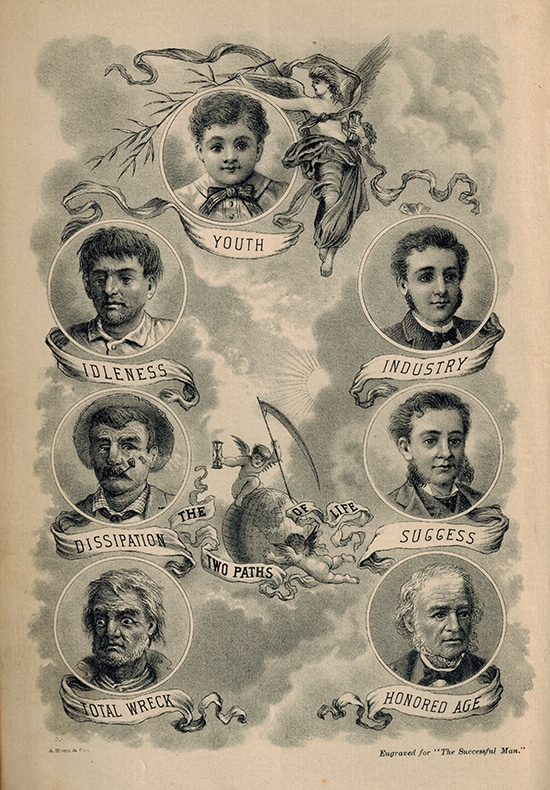
It’s a new year and people all over the world are making resolutions on how they’re going to improve themselves. Usually these goals consist of doing something new or adding a habit to their lives: get back into exercising, start journaling, launch a side hustle, adopt the Paleo diet, earn more money, etc.
But after a few weeks of motivated effort, most folks start to lose steam. They stop going to the gym, never sign up for that woodworking class, and go back to eating Pop Tarts and Doritos. And then they feel like crap because they haven’t made any progress on improving themselves.
There’s nothing wrong with making these types of positive goals, but they’re not the only way to improve your life. Just as effective as adding something to our lives, if not more so, is subtracting the things that might be holding us back.
In truth, oftentimes the path to becoming a better man is found in following the via negativa – the negative way.
Via negativa is a Latin phrase used in Christian theology to explain a way of describing God by focusing on what he is not, rather than what he is; understanding Deity’s positive qualities is a task deemed impossible for the finite minds of humans.
Via negativa can also be used to describe a similarly “negative” way of improving one’s life; instead of concentrating on what you do, the focus turns to what you don’t do. This path has two main thrusts: stripping bad habits and situations out of your life, and avoiding bad habits/situations in the first place.
In his book Antifragile, Nassim Taleb argues that the best way for a person or organization to become antifragile (something that gains from setbacks and chaos rather than just survives) is to first decrease their downside. Downside consists of those things, people, actions, habits, or systems that make you vulnerable to volatility and risk. For example, debt isn’t much of a problem when you have enough money coming in to make your payments, but as soon as you lose your job, that debt becomes a really big problem, really fast.
But downside can create a handicap even when volatility doesn’t exist. Take the debt example again. Money you shunt over to your monthly payment is money that could have been used for more productive purposes like starting a business or taking a class to learn a new skill. Downside limits your options in life.
By focusing your efforts on eliminating that debt, you eliminate the risk of falling behind on payments and you free up money to be spent on increasing your upside in life.
It’s addition through subtraction.
As it goes with money so it goes with everything else.
Smoking is a huge downside to your health; removing the smoking habit from your life provides more benefit than adding more exercise to your daily routine and protein to your diet.
Toxic relationships are a downside to your emotional and psychological well-being. Just ask someone who has been in an abusive relationship how much every area of their life improved once they got rid of that interpersonal albatross.
Not only can eliminating bad habits be a highly effective way to improve your life, it’s also often a lot easier than creating a new, positive habit. Positive habits take a lot of motivation and willpower to cultivate. But not doing something is much simpler. For example, if you’re significantly overweight, switching to a low carb diet is going to shed those lbs for sure, but it ain’t easy to stick with. Eliminating soda, on the other hand, is comparatively a cinch. Dropping the sugar water habit isn’t going to turn you into a trim athlete, but it’ll get you on your way; once you’re closer to your goal, and feeling some momentum, you can start making more significant, positive changes to your diet.
“I have used all my life a wonderfully simple heuristic: charlatans are recognizable in that they will give you positive advice, and only positive advice, exploiting our gullibility and sucker-proneness for recipes that hit you in a flash as just obvious, then evaporate later as you forget them.” -Nassim Taleb
Taleb argues that removing downside is just one part of via negativa. The other part is to simply avoid downside in the first place.
Because we have a bias towards positive action, it’s hard for us to focus on how avoiding downside is a plus; we recognize when things go right, but fail to notice when something bad didn’t happen. This bias manifests itself in the way businesses reward success. Corporations will handsomely reward CEOs who substantially increase shareholder value during a boom time, but won’t provide the same sort of bonuses to the CEO who takes prudent measures that prevent the company from losing its metaphorical shirt during a bust.
However, in the long run, not going bust is the best path towards success – you can’t make any money if you’re bankrupt! As Taleb notes:
“In practice it is the negative that’s used by the pros, those selected by evolution: chess grandmasters usually win by not losing; people become rich by not going bust (particularly when others do); religions are mostly about interdicts; the learning of life is about what to avoid. You reduce most of your personal risks of accident thanks to a small number of measures.”
Or as Berkshire Hathaway Vice-Chairman Charlie Munger put it, “It is remarkable how much long-term advantage people like us have gotten by trying to be consistently not stupid, instead of trying to be very intelligent.”
I know a few very smart and talented individuals whose lives are in utter shambles despite their gifts. And it’s because they keep making stupid and avoidable mistakes. They consistently add wholly unnecessary downside to their lives.
If they had done nothing really positive, but had simply avoided the DUIs, the drug arrests, the out-of-wedlock births, the affairs, and the consumer debt, their lives would have been vastly superior to the ones they have now.
Let that sink in: doing nothing would have given these people a better life than they have now.
I sometimes hear people carp that the Ten Commandments or other religious edicts focus too much on restricting behavior, and don’t focus enough on positive actions. But perhaps there’s wisdom in focusing on the “thou shall nots.” If you can go through life not murdering people, not lying, not sleeping with your neighbor’s wife, and not filled with envy, you’re going to have a pretty good life.
Following via negativa may seem like a defensive and risk-averse way to live. But by focusing on what you don’t do, you actually put yourself in a position to be more aggressive with life. The man who has never been arrested, doesn’t have debt, and doesn’t have the drama that comes with bad relationships has more opportunities presented to him and more money, energy, and willpower to capitalize on those opportunities when they appear; the man who has gone though life making stupid mistakes, doesn’t. In other words, you’ll never get a chance to work on the “shalls” if your life’s been wrecked by ignoring the shall nots.
The great German algebraist Carl Jacobi had a maxim on how to approach difficult math problems: “Invert. Always Invert.” Oftentimes the best way to gain clarity about a problem is to address it backwards.
As it goes with math, so it goes with life.
This year, don’t ask yourself “What am I going to do to be a better man?” or “What kind of man do I want to be?” Invert those questions and ask “What am I NOT going to do to be a better man?” and “What kind of man do I NOT want to be?”
I think you’ll be surprised at the insights you’ll get from the answers to these via negativa questions.
If you have stupid stuff in your life, remove it. Reducing the downside will have immediate and noticeable gains that you won’t get with positive actions.
Stop smoking, get rid of debt, get rid of toxic people in your life, quit wasting time on the internet, stop eating crap, quit porn.
If you’ve already eliminated a lot of bad habits from your life (or never started them in the first place), take via negativa to the next level by eliminating stuff that might be good, but takes you away from focusing on the best things in life. On his blog, Cal Newport shared an anecdotal story about Warren Buffet that illustrates the importance of choosing the best over the good:
“Buffett wanted to help his employee get ahead in his working life, so he suggested that the employee list the twenty-five most important things he wanted to accomplish in the next few years. He then had the employee circle the top five and told him to prioritize this smaller list.
All seemed well until the wise Billionaire asked one more question: ‘What are you going to do with the other twenty things?’
The employee answered: ‘Well the top five are my primary focus but the other twenty come in at a close second. They are still important so I’ll work on those intermittently as I see fit as I’m getting through my top five. They are not as urgent but I still plan to give them dedicated effort.’
Buffett surprised him with his response: “No. You’ve got it wrong…Everything you didn’t circle just became your ‘avoid at all cost list.’”
Steve Jobs said something similar in an interview a few years ago:
“People think focus means saying yes to the thing you’ve to focus on. But that’s not what it means at all. It means saying no to the hundred other good ideas that there are. You have to pick carefully. I’m actually as proud of the things we haven’t done as the things I have done. Innovation is saying no to 1,000 things.”
Eliminating obvious downsides like bad habits and debt will provide a good life; eliminating good things so you can focus on the very best will lead to a truly flourishing life.
Besides eliminating downside (and possibly good, yet best-distracting activities), resolve this year and for the rest of your life to avoid stupid mistakes; when you see red flags a-wavin’, turn and walk the other way. I promise your life will be much easier and filled with more opportunity if you do.
If you’ve already made a bunch of stupid mistakes in your life, don’t despair. Yes, you’ve dug yourself into a hole, but the first step to getting out of that hole is to stop digging. Resolve today that you’re going to avoid stupid life-altering mistakes whenever possible. After that, start working your way out of that hole by doing what you have to do to make things right. It won’t be easy and it will take time, but improvement and turnarounds are possible. Plenty of people have done it before and so can you.
What are your via negativa goals this year?
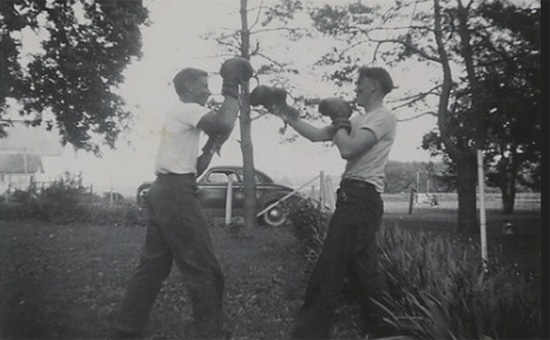
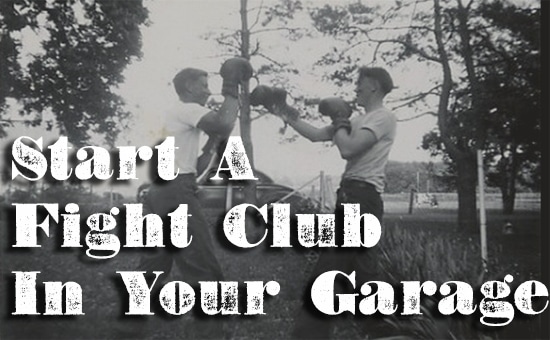
Editor’s Note: This is a guest post from Tim Chilcote.
Forget the first rule of Fight Club (“You do not talk about Fight Club.”). You’re going to break it all the time. You’ll talk at dinner parties, you’ll share tips and advice with members of your club, and you’ll have to explain to nosy neighbors why grown men are beating on each other in your driveway. No, instead, focus on a much more important rule of fight club: don’t get hit. Defense is everything, particularly when dealing with amateurs. You don’t want anyone to get injured, so first and foremost, you’ll need to keep your hands up.
I was first introduced to boxing by the University of Notre Dame Bengal Bouts. I was a slow, out-of-shape grad student trying to keep up with young, athletic undergrads. I was, I’m certain, one of the worst boxers in the program’s storied history. But my boxing skills didn’t matter nearly as much as the workouts themselves: two grueling hours, five days a week, of push-ups, sit-ups, sprints, jumping jacks, and sparring. Those workouts pushed me to my physical limits and helped me find a fighting spirit — an invaluable discovery. And beyond the workouts, nothing awakens the spirit so much as a good punch to the jaw.
Years later I found myself back in the gym, trying to stay in shape, doing the same boring exercises we all see repeated at every gym out there: bench press, curls, squats. All the usual, boring routines. Then a few friends and I decided to get together and punch each other, and the old passion was reawakened. Even if you never become an expert of the sweet science, do yourself a favor, and get together to punch your friends.
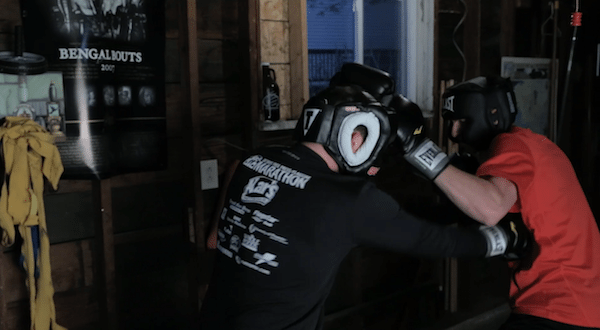
Boxing is a great way to stay in shape. The cardio benefits of its training (jump-rope and jumping jacks) are fantastic, and nothing gets the heart pumping like a good sparring session. The amount of energy you’ll expend moving your legs and trying to outwit your opponent may be the best workout around. Beyond the obvious health benefits, there are plenty of other reasons to start a Fight Club. Here are a few:
Celebrate Your Animal Instincts: Men are wired to fight, but we so rarely get the chance in the modern world. Boxing, as Hemingway knew, is a pillar of manhood — a way for men to enjoy competition and to experience, in some way, our most primal instincts while in the confines of a relatively safe, regulated environment.
Commitment: Doing anything, week in and week out, requires commitment. And when that commitment requires you to get punched in the face…talk about dedication. Whether you have work or family obligations, if it’s raining or snowing, if you’re tired or your attention is elsewhere, you’ll find it nearly impossible to let the Fight Club down. When a group of men are willing to stand in your garage, in sub-zero temperatures, and glove-up — well, how can you say no to that?
Overcoming Nerves: Do you ever get stressed before a big presentation at work, or before a final exam in school? Fight Club will teach you to keep your cool during high-stakes situations, because Fight Club simulates the highest of stakes. A friendly Fight Club may never get close to the ultimate situation of do-or-die, but even during a casual sparring session, the same fight-or-flight instincts take over. Learning to manage your fear and remain calm in the ring will inform the rest of your life. Next time you walk into a meeting, you’ll know how to stick and move, and you’ll remember to touch gloves at the end.
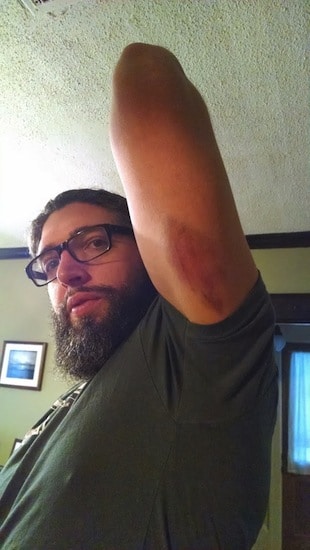
Humility: Boxing will embarrass the hell out of you. Here I am losing in my first Bengal Bouts fight. We can’t all be winners. Sometimes we’re overmatched, sometimes it’s the luck of the draw. Often, though, losing is our own fault, due to lack of preparation. Either way, it’s important to get your ass kicked from time to time. See what it means to get knocked down, then go to your corner and figure out why. If you’re doing Fight Club right, you will lose — even if losing means just one jarring punch. Humble yourself.
Camaraderie: You never really know a man until you’ve traded blows. It’s the best way to seal a friendship, really. You find out what they’re capable of taking, of dishing out, and what they’re capable of holding back. The full gamut of emotions is discernible in every sparring session, right down to every punch. But what’s most apparent, when you touch gloves at the end, is how much you actually care for and respect one another. It’s almost a way of saying: “I’m willing to let you hit me and I’ll still go to bat for you.” Imagine how loyal a friend that breeds.
Stress Reduction: At our core, we’re animals. We need to release something primal. Even at a low intensity sparring session, hitting (and being hit, believe it or not) makes all the stresses of the day go away — it quite literally knocks the worry right out of you. In the ring it’s just you and your opponent and everything else fades into the background. You’ll not experience a more peaceful hour than in the wind-down after Fight Club.
Boxing isn’t for everyone. Find a small group of guys (4-6) who are in similar physical health, and who are kind-hearted enough to take a punch without holding a grudge, and brave enough to throw a punch without feeling guilty. These kinds of guys are, surprisingly, few and far between. Getting the group together may well prove to be the most challenging fight of all
If you’re inexperienced, find a trainer in the area who can teach you proper boxing technique, as well as set expectations for the intensity of your weekly training sessions. Just ten sessions with a good trainer will get you off and running. Once you’re able to maintain quality workouts on your own, bring your trainer back as your skills improve, for nuanced advice and as a test to make sure you’re maintaining a reasonable level of intensity.
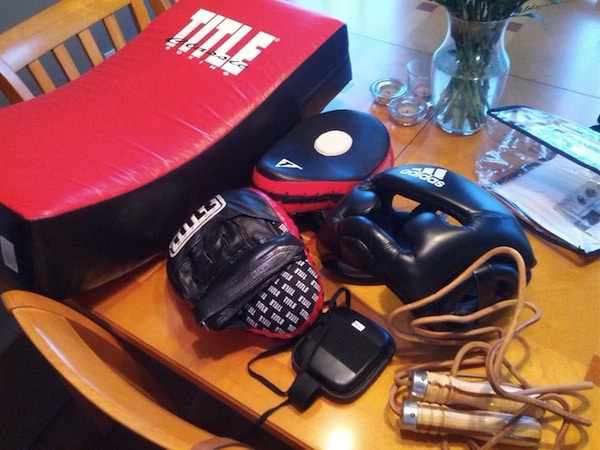
Fight Club isn’t a fashion show. You don’t need much to get started — gloves, headgear that protects the orbital bones, mouthpieces, and a heavy bag should be enough. Frankly, to really get started you don’t need much more than a few guys and a willingness to do push-ups.
As you get more serious about turning your garage into a home gym you might invest in a medicine ball for team exercises, pads for glove-work, mats for crunches, jump ropes, a battle rope, and a pull-up bar. Hand-wraps and tape are also essential for protecting your knuckles and wrists during sparring sessions and bag work. And, if you live in a state as cold as my dear Michigan, consider purchasing a space heater for your garage. Winter should never stop you from working out.
You’ll find most of what you need at Title MMA or at a local sporting goods store.
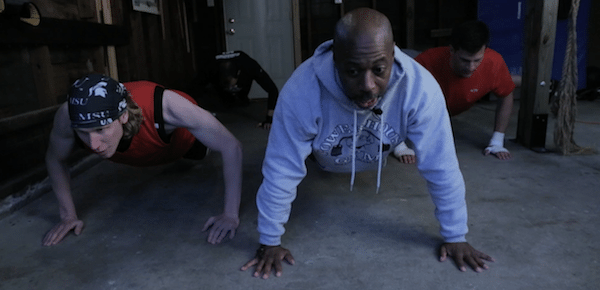
To enjoy all the health and mental benefits of Fight Club, keep the intensity as high as possible for the full workout, somewhere between an hour and an hour and a half, for a man of decently good health.
Warm-up: To start, as a team, rotate together through a circuit of jump rope (100 rotations), push-ups (20), and crunches (25) for 10 full rounds.
Stretching: Follow that initial warm-up with a good stretch of the neck, back, legs, wrists, and shoulders to prepare for your second circuit.
Team training: For your second circuit, it’s another team workout. Three full rounds of exercises (like chest passes) with a 15-pound medicine ball, pull-ups and chin-ups, 60 seconds of battle rope, knee raises and bear walks, and 60-second rounds on the heavy bag, as your space and equipment allow.
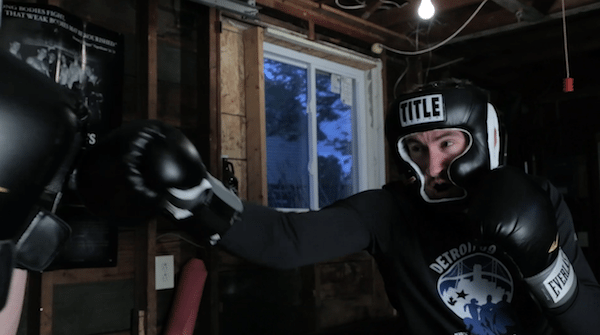
Sparring: Now that you have a full sweat going, and now that your arms are good and tired, it’s time to punch your friends. Again, keeping your hands up is the most essential skill for any boxer. The key is to not get hit. That fact will become glaringly obvious after you get hit a few times. Start with three 1-2-minute rounds, with a 1-minute rest between rounds. You’ll be amazed how quickly your legs will fail on you, and how long a minute can last. Work your way up to 3-minute rounds over time.
To help you get started, here are four basic punches, as well as an introduction to combinations and light sparring, presented by our trainer, Master T:
Jab
Cross
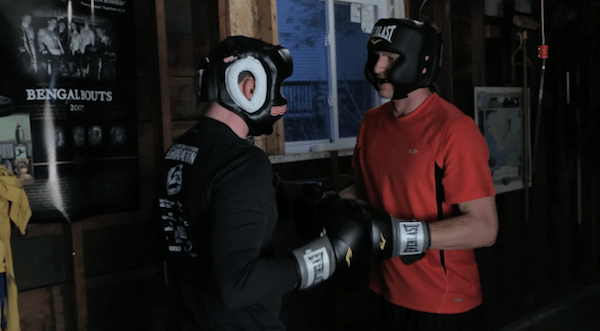
Above all, don’t sweat the details — just sweat. You’re not a pro. Fight Club is not about winning or looking cool. Fight Club is about getting in the ring, getting in shape, and learning something about yourself. If nothing else, you’ll have something to talk about. Forget the first rule.
________________________________
Follow Tim Chilcote at @TimChilcoteand +TimChilcote, and follow trainer Tarrance “Master T” Alfred at @MasterTfitness. Special thanks to videographer Nathan Rockwell and Fight Club members Brian Doughty, Matt Mergener,and Rob Filipp.










Iceland, with its extreme landscapes, jagged lava fields and Northern Lights, is arguably one of the most photogenic countries in the world. So it’s no surprise that over half a million tourists flock there every year to shoot the landscape. But UK-based photographer Andy Lee, on his first visit to the country, came back with a series of photos titled “Blue Iceland” that captured the waterfalls, peaks and roads in, literally, a whole new light. Using infrared photography to pick up invisible light rather than visible light, Lee transformed Iceland into a series of stark, moody and somewhat dreamlike silhouettes. At times the austere rock formations and glowing waterfalls almost appear to be painted. You can see much more of Lee’s work over on his portfolio site. In the words of Lee himself, “Infrared and Iceland, a match made in heaven.” (via PetaPixel)


With just a few strokes of his calligraphy pen, London-based designer and illustrator Andrew Fox created this fun series of minimalistic animals. What a great exercise in the constraints of line and color, perhaps most famously illustrated in a similar exercise by Picasso back in the 1940s. color. See more over on Behance.